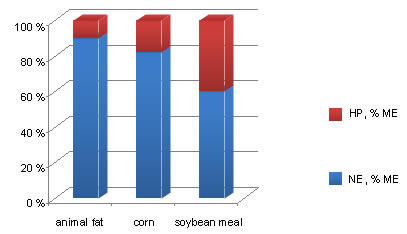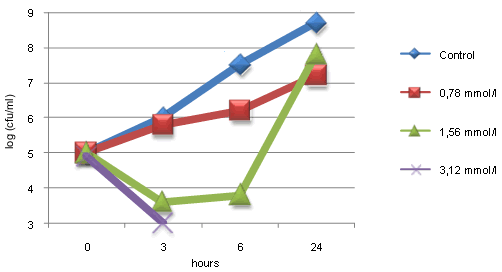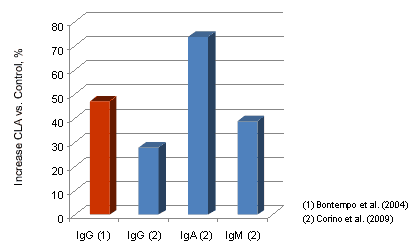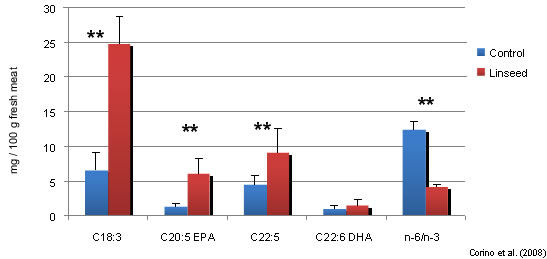
Recently, the interest of nutritionists pointed to specific fatty acids for some particular physiological effects:
1. Gut heath and anti-microbial activity
The low chain fatty acids (LCFA) produced from fermentation of non starch polysaccharides and non digestible oligosaccharides or supplemented in the diet, positively influence gut health of piglets. In particular butyric acid may have a direct stimulatory effect on epithelial cell proliferation and it’s also an energy source for the intestine.
The medium chain fatty acids (MCFA), with a chain length of 6-10 carbon atoms appear to show optimal antimicrobial activity. The currently accepted theory is that the lipid microbial cell membrane is permeable to undissociated fatty acids, a consequence of which the fatty acid is capable of entering the cell, pH drop and cell-lyses. In this respect, the better performance of MCFA is attributed to the extreme permeability of the microbial cell membrane for these fatty acids (Figure 2).

2. Anti-inflammatory and immunomodulatory activity
The omega-3 fatty acids (n-3 PUFA), and in particular the ratio of n-3 to n-6 PUFA, appears to be critical in inhibiting inflammatory response. In fact, the ability to convert n-3 PUFA into anti-inflammatory mediators depends upon enzyme activity. Because n-6 PUFA require the same enzymes for conversion into their prostaglandin and thromboxane equivalents, excessive intake of n-6 PUFA can saturate enzyme activity and prevent the production of anti-inflammatory substances.
n-3 PUFA may be supplemented in the diets with linseed (50% of C18:3) or marine feedstuffs, as fish oil or algae (with high content in long chain n-3 PUFA, EPA and DHA). In swine nutrition the supplementation of boar and sow diets with n-3 PUFA have positive influences on farrowing rates and piglets born alive or pre-weaning mortality, respectively.
Numerous studies also reported that conjugated linoleic acid (CLA) have immunomodulating
effects in several experimental models. CLA is the collective name for a group of geometric and positional isomers of linoleic acid (18:2) in which the double bonds are separated by a single carbon-carbon bond instead of a methylene group. In particular we observed that dietary CLA enhanced serum IgG and lysozyme production in weaned piglets fed CLA for 4 wks and that dietary supplementation of 0.5% CLA to sows during late gestation and lactation increased the IgG concentration of colostrum and also affected its fatty acid composition. CLA supplementation to sows may therefore have a positive influence on immune response in sows and suckling piglets (figure 3).

3. Functional foods design
The use of n-3 PUFA and CLA is also related to the development of fresh meat and pork-product with higher dietary and nutritive characteristics. The Western population currently consumes an inadequate level of n-3 PUFA and a specific requirement of CLA is also assumed.
In fact one way to increase the intake of specific FA without changing the nutritional behavior of the consumers would be to fortify traditional food items such as meat and meat products with n-3 PUFA, for example, by feeding diets containing linseed or marine feedstuffs to pigs (figure 4). Moreover the high degree of unsaturation of n-3 PUFA makes them susceptible to oxidative damage, which does negatively affect the technological and sensory quality and acceptability of processed meat products. Specific anti-oxidant supplementation is required.

Figure 4. Loin n-3 PUFA content in loin of heavy pigs fed control diet or linseed diet.




